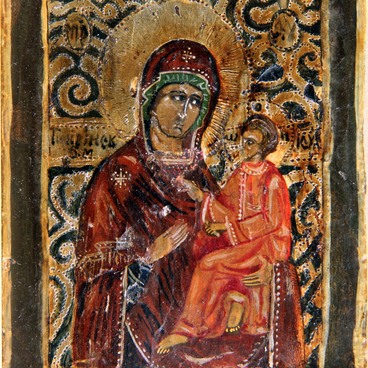Adrian of Poshekhonye took the monastic vows in the Monastery of Cornelius of Komel near Vologda. When his spiritual mentor died, Adrian took an icon of the Dormition of the Virgin Mary and, together with the novitiate Leonid, left the monastery. In 1540 Adrian established a monastery near today’s Poshekhonye, and three years later, with blessing of Metropolitan Macarius, became a Father Superior of a new monastery, the Monastery of Adrian of Poshekhonye.
However, local people were prejudiced against monks. One day, they took up arms and decided to rob the monastery: Adrian intended to build a new cathedral and was believed to have a large amount of money. However, the robbers found only a few coins. They tortured the Venerable for a long time: cut him with knives and burnt him with fire, then choked him to death. The monks testified that before he died, Adrian of Poshekhonye was praying God to forgive his torturers, saying: Forgive the sins of these people, as they do not know what they are doing. The Russian Orthodox Church venerates St. Adrian of Poshekhonye as a venerable martyr — that is how monks who were martyrs are titled.
However, local people were prejudiced against monks. One day, they took up arms and decided to rob the monastery: Adrian intended to build a new cathedral and was believed to have a large amount of money. However, the robbers found only a few coins. They tortured the Venerable for a long time: cut him with knives and burnt him with fire, then choked him to death. The monks testified that before he died, Adrian of Poshekhonye was praying God to forgive his torturers, saying: Forgive the sins of these people, as they do not know what they are doing. The Russian Orthodox Church venerates St. Adrian of Poshekhonye as a venerable martyr — that is how monks who were martyrs are titled.

